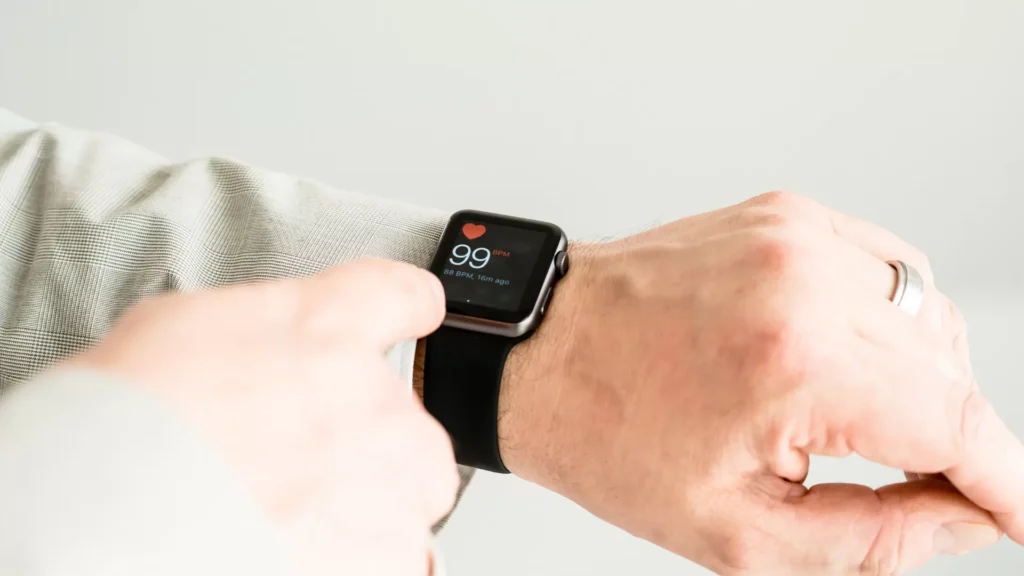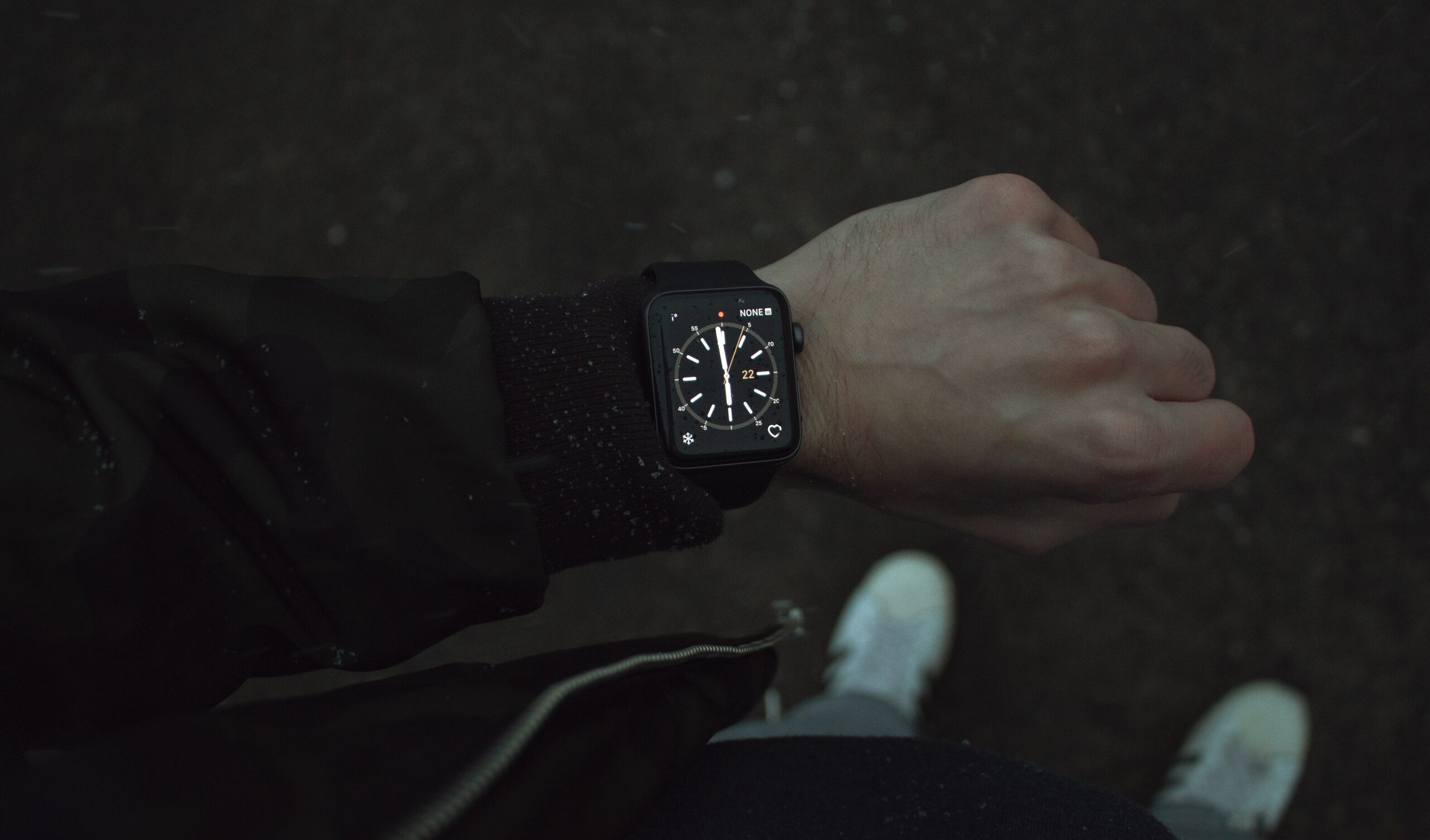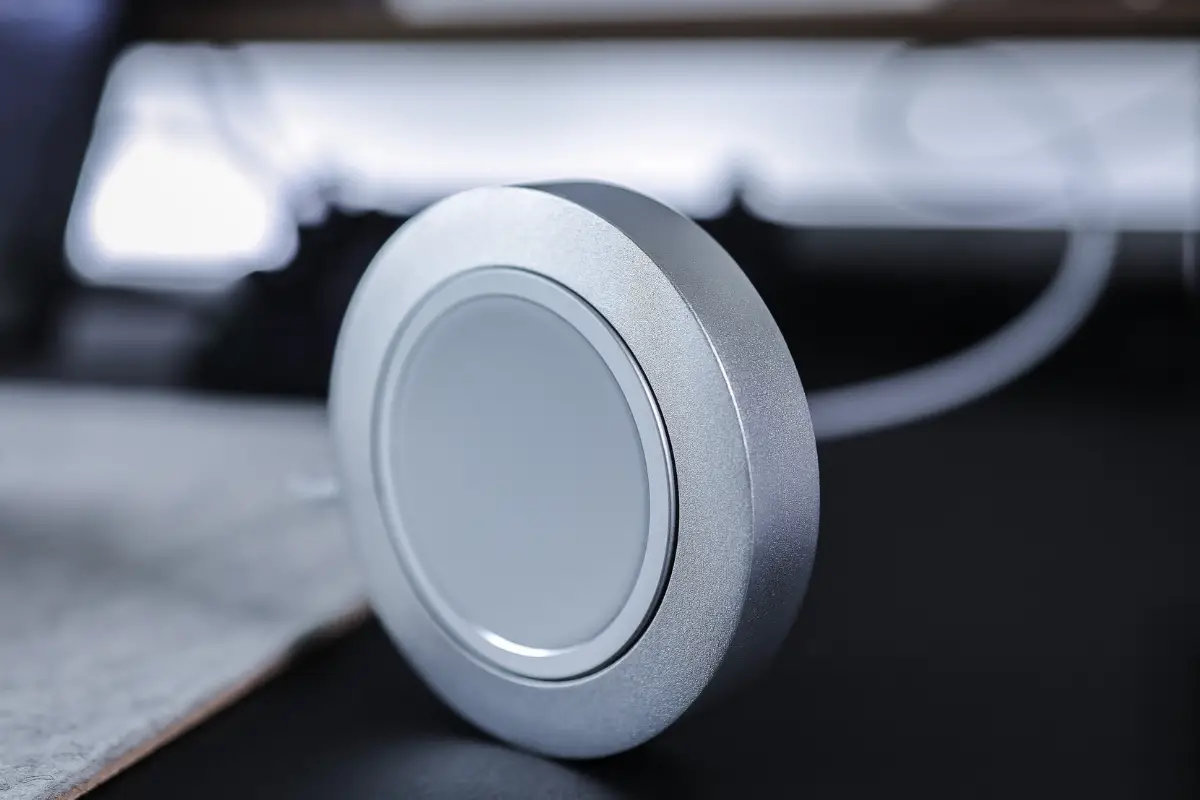When Should You Charge Your Apple Watch?

If you’ve recently gotten your hands on a brand new Apple watch, then you’re probably wondering how you can properly maintain its battery health so your watch lasts a long time. You’re probably also wondering when you should charge your Apple watch if you use a sleep tracker since sleep tracker does consume 15-20% of your battery when you’re asleep.
In terms of convenience, the best time to charge your Apple watch is 90 minutes before bed every night, primarily if you use a sleep tracker. In terms of your battery lifespan, you would want to maintain a charge of 75% to 25%. This is because Apple watch uses Lithium-Ion batteries, which work in charge cycles, each time you consume a charge cycle your battery capacity gets lower and lower. A 75% to 25% charge cycle has been shown to offer the longest battery life expectancy as it is the optimal charge for maintaining essential temperature levels and reducing stress from high discharges & overcharges.
Let’s now take a look at the three main factors that determine the life expectancy of your apple watch. Let’s dive in!
When Should You Charge Your Apple Watch For a longer Battery Life expectancy?
First, let’s quickly start with why you should worry about your Apple watch’s battery health. There are two main reasons; these are your battery capacity and performance factors. Minor factors can make the difference of you’re Apple watch performing at a much slower rate and needing a recharge much faster than it should.
So, the first thing you need to know is Apple watches use Lithium-Ion batteries; all rechargeable batteries such as Lithium-Ion become less effective when they chemically age. They will retain less battery capacity meaning they will hold a charge for a lot less time, and they will slow down significantly. According to apple, here are a few examples of this: longer app launch times, lower frame rates, reduced wireless data throughput, screen dimming, lower speaker volume, or missing heart rate data during a workout.
So how do you ensure your Apple Watches battery health is at peak levels?
Well, your battery expectancy is dependant on three factors your charge cycles, the environmental temperatures you expose your Apple watch to, & the battery percentage at which you may store your device.
Let’s start with charge cycles.
A charge cycle is when you consume equal to 100% of your battery capacity, so going from 100% battery to 0% consumes one charge cycle; the more charge cycles your device consumes, the faster your battery will chemically age & the faster your battery capacity and performance will diminish.
however, because temperature & battery stress has a massive impact on lithium-ion batteries, discharging your apple watch from 0 to 50% will age your battery much quicker than discharging your battery from 80% to 30%. This is because discharging below 25% puts a lot of stress on your battery by increasing its temperature. Also, charging over 80% will also age your Apple watch’s battery much quicker by increasing temperature.
This is why Apple added a feature on all Apple watches called Optimized Battery Charging, which is designed to delay charging past 80%.
So now that you understand that charging your apple watch to 100% & discharging your apple watch to 0% both put added stress on your battery, what’s the ideal charge cycle?
According to Battery University’s extensive research on lithium-ion batteries, the ideal charge cycle for a prolonged battery life span is 75% to 25%; this charge cycle had the best results in the long run when it comes to maintaining battery capacity and battery performance. Additionally, the study shows a charge cycle from 100–25% Has a significantly shorter lifespan. With the best being a 75–65% charge cycle which offers the longest cycle life but since this is only a 10% battery capacity, it’s not a sustainable method.
Enviromental Tempratures & Storage
According to Apple, your Apple watch performs best in an environment with temperatures of 62° to 72° F (16° to 22° C), anything above or below, especially when they rise above 95° F (35° C), can permanently damage your Apple watch’s battery capacity.
The reason for this is because Lithium-Ion batteries don’t do well in extreme temperatures, whether it’s too hot or too cold.
Additionally, because maintaining a high battery percentage causes additional stress to your device’s battery, Apple recommends storing your device at 50% battery if you will be storing your Apple watch for an extended period.
Storing your Apple Watch at a 100% battery & storing it outside its recommended temperature will double the rate of decline for your battery health.
Battery university shows the impact of battery degradation in extreme temperatures when your device is stored at 100% battery. After three months of storing your device at 100% battery at 40°C, your apple watch will only retain 65% of its battery capacity. If the Apple watch is stored at 40% battery at 40°C, it will retain 75% of its battery capacity.
Tips to maintain and perserve Apple Watch Battery Health:
Ensure Your Device Is Updated To The Latest Software
The first thing you’d want to do to ensure your the quality of your Apple watches battery is to always install the latest version of watchOS. This is because new updates may have battery optimization features and bug fixes that enhance both the performance & efficiency of your device.
Monitor Your Battery Usage
It’s important to occasionally monitor your battery usage & turn off any additional applications running in the background that may be draining additional battery and forcing your Apple watch to work overtime.
Open the Apple Watch app on iPhone and go to My Watch > General > Usage to view your usage and standby information.
Keep Bluetooth On
Turning off Bluetooth on your Apple watch will drain your battery life quicker because Bluetooth is a more energy-efficient method of communicating with your other devices.
Turn Wrist Raise Off
If you notice your wrist raise feature is turning on way more than you’d like it to, then it’s best to turn the feature off and turn Wake Screen on instead.
To do this, go to Settings -> General-> select & turn Wake Screen on, and Wrist Raise off.
When Should You Charge Your Apple Watch For Convenience?
If you use a Sleep tracker on your Apple Watch, you’re probably finding it hard to maintain your battery life for the entire day and when you sleep. Many apple users find the best time to charge their apple watch is 60 minutes to 90 minutes before bed; this is because many of the watch’s features aren’t typically required during this time. But it does depend on your schedule.
what happens if you charge your apple watch overnight?
Since Apple watch uses lithium batteries your batteries once your device reaches 100% battery, it will immediately stop charging, so charging your device overnight is no different than simply charging your device to 100%.
Should I charge my Apple Watch every night?
Lithium-Ion batteries work differently from nickel batteries, in which the battery’s health isn’t affected by recurring charges. So frequent charges don’t affect your apple watch whatsoever; what does is your charge cycles, temperature, & the battery percentage of your device when stored.





